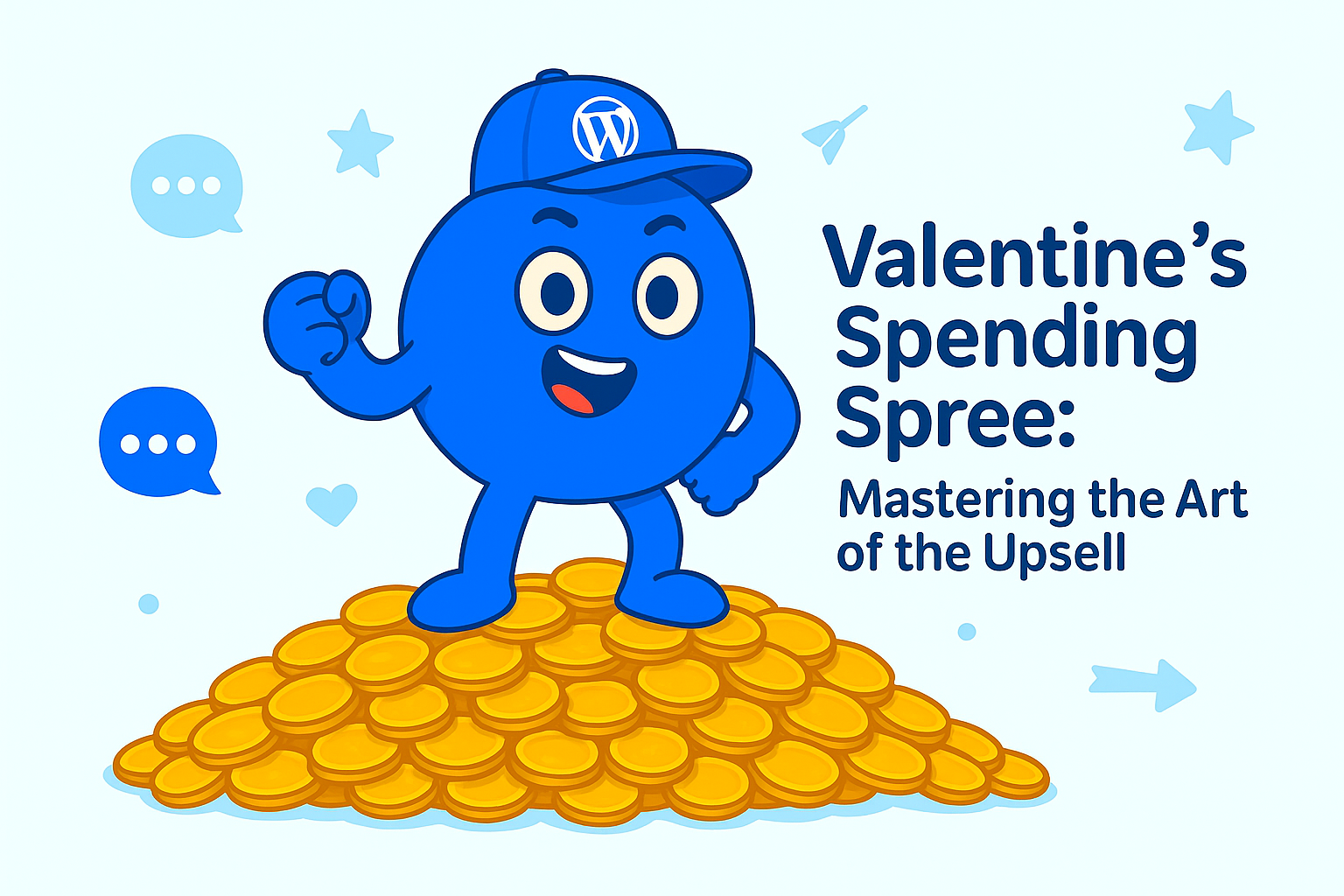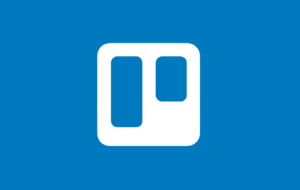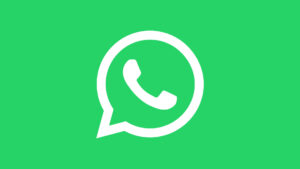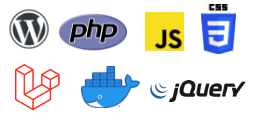Valentine's Spending Spree: Mastering the Art of the Upsell
Valentine’s Day. It’s more than just flowers and chocolates. For your business, it’s one of the year’s biggest chances to rake in sales! Think about it: customers are already in a spending mood, ready to show love.
So, how do you make sure your products are the ones they choose? As we plan for Valentine’s Day 2026, the question isn’t if people will spend, but how much, and where.
This article dives into the fascinating retail psychology that transforms affection into significant sales, showing you how to increase Valentine’s sales by making your offerings truly irresistible. Discover how to turn your products into must-haves for every shopper, leveraging cutting-edge digital marketing strategies for holidays, and how tools like the Floating Awesome Button (FAB) can simplify your path to profit.
Introduction: Love, Gifts, and the Power of Spending
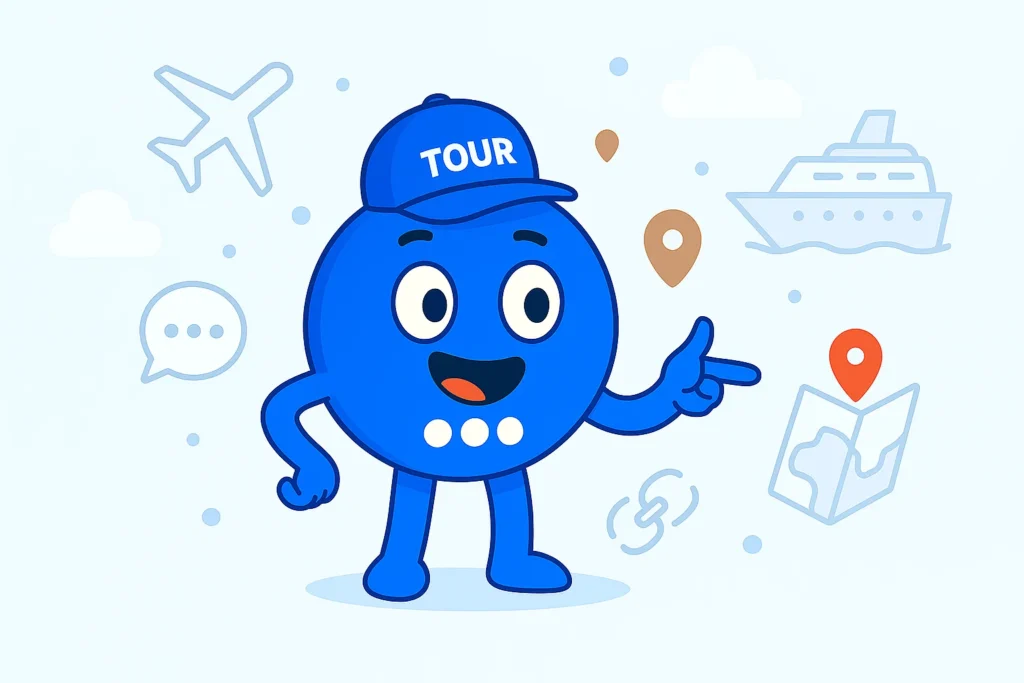
Valentine’s Day, while widely seen as a celebration of romantic love, is also a powerful commercial phenomenon. This day offers businesses a unique opportunity to tap into deep human emotions and influence purchasing behavior. It’s not just about giving flowers or chocolates; it’s about connecting with people on an emotional level.
In fact, Valentine’s Day spending has become so significant that businesses and marketers have designed strategies that cater to the emotional needs and desires of their customers.
Emotional Connection to Spending
People are more open to expressing love through thoughtful gifts and gestures during this period. Whether it’s a handmade card, a personalized gift, or a fancy dinner, individuals are eager to demonstrate their affection.
In 2025, U.S. Valentine’s Day spending is expected to reach an all-time high of $27.5 billion, with shoppers spending an average of $188.81. This marks a clear increase from the $25.8 billion spent in 2024, signaling an ongoing trend of increased consumer investment in celebrating the holiday.
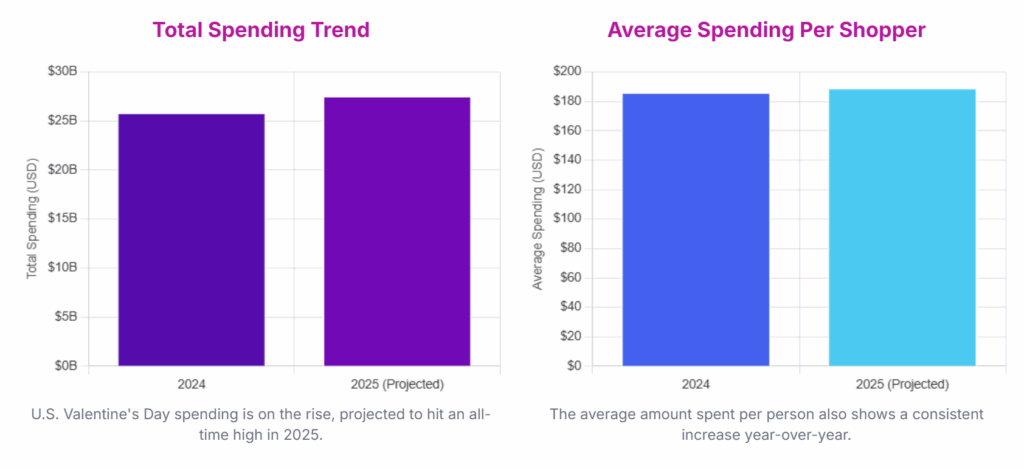
This growing expenditure reflects the strong emotional connection people feel toward the occasion and the desire to express their love through meaningful gifts.
The Psychology Behind Gift-Giving

The act of giving and receiving gifts isn’t just a social custom—it’s driven by psychological factors. Research shows that both giving and receiving gifts trigger the release of dopamine, the “feel-good” chemical in the brain. This response is what makes the process of giving gifts so emotionally satisfying.
It’s not just about the material value of the gift, but the emotional satisfaction it brings to both the giver and the recipient. The act of seeing a loved one smile after receiving a thoughtful gift often outweighs the monetary cost, making the experience fulfilling on a deeper level. This emotional response is one of the key reasons why people are willing to spend more on gifts during Valentine’s Day, as the emotional reward often justifies the financial cost.
Social and Cultural Pressure to Participate
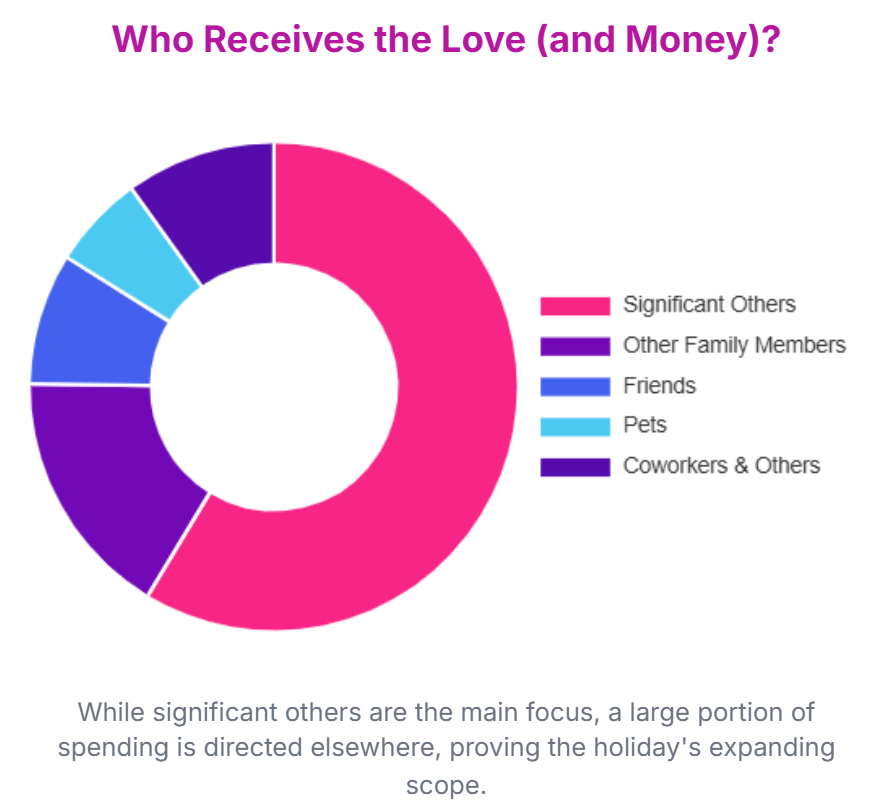
Valentine’s Day is not merely a personal choice; it is also a social obligation. Many feel compelled to participate due to societal expectations surrounding the holiday. This pressure often creates a sense of urgency to buy gifts, leading to impulsive purchases.
Interestingly, the recipients of Valentine’s Day gifts are not limited to romantic partners. While romantic love is the focal point of the day, people frequently extend their expressions of affection to family members, friends, pets, and even coworkers.
- Parents might give gifts to their children.
- Friends often exchange cards or tokens of appreciation.
- Pets are treated to special treats or toys.
- Coworkers may share small gifts or sweet messages, especially in workplaces that embrace the holiday spirit.
This broader definition of who receives love on Valentine’s Day highlights how the holiday has evolved into a celebration of all kinds of love, not just the romantic variety.
Businesses can capitalize on this shift by offering products and services that cater to these diverse gifting needs—whether family-oriented gifts, pet products, friendship-themed items, or office-themed Valentine’s gifts. While Valentine’s Day is traditionally linked to romantic love, the desire to meet social expectations and express affection toward various people or even animals can motivate consumers to spend more. As a result, they are often more open to purchasing gifts and items they may not have originally planned to buy.
Strategic Upselling for Emotional Fulfillment
Upselling isn’t merely about persuading customers to spend more money; it’s about enhancing their emotional experience. During Valentine’s Day, businesses can employ upselling strategies that make the act of gift-giving more meaningful. Rather than just pushing for a higher price, upselling can be framed as offering add-ons or premium services that elevate the emotional value of the gift. For example:
- A luxury gift box
- Personalized engraving
- Premium gift wrapping
These thoughtful additions can transform an ordinary gift into something extraordinary, making it feel even more special and considerate. This type of upselling focuses on increasing the emotional value of the gift, rather than just its monetary cost, ensuring that customers feel they are giving something truly unique and memorable.
The Power of Psychological Pricing
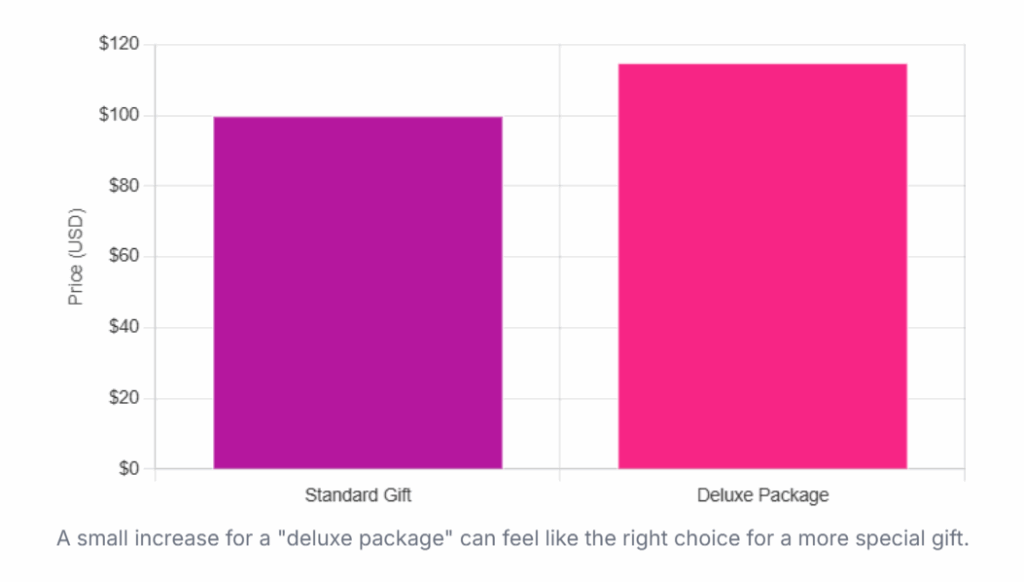
One effective strategy for upselling during Valentine’s Day is using psychological pricing to nudge customers toward purchasing premium options. For instance, offering a “deluxe package” for a small additional cost can make it feel like the right choice for someone looking to make their gift more special.
When customers are emotionally invested in a holiday like Valentine’s Day, they are often more open to paying a bit extra if they perceive it as improving the experience or fulfilling an emotional need. This strategy capitalizes on the emotional reward associated with gifting, making customers feel that the extra cost is worth the emotional fulfillment of giving a special gift.
Capitalizing on Urgency and FOMO: Turning Panic into Profit
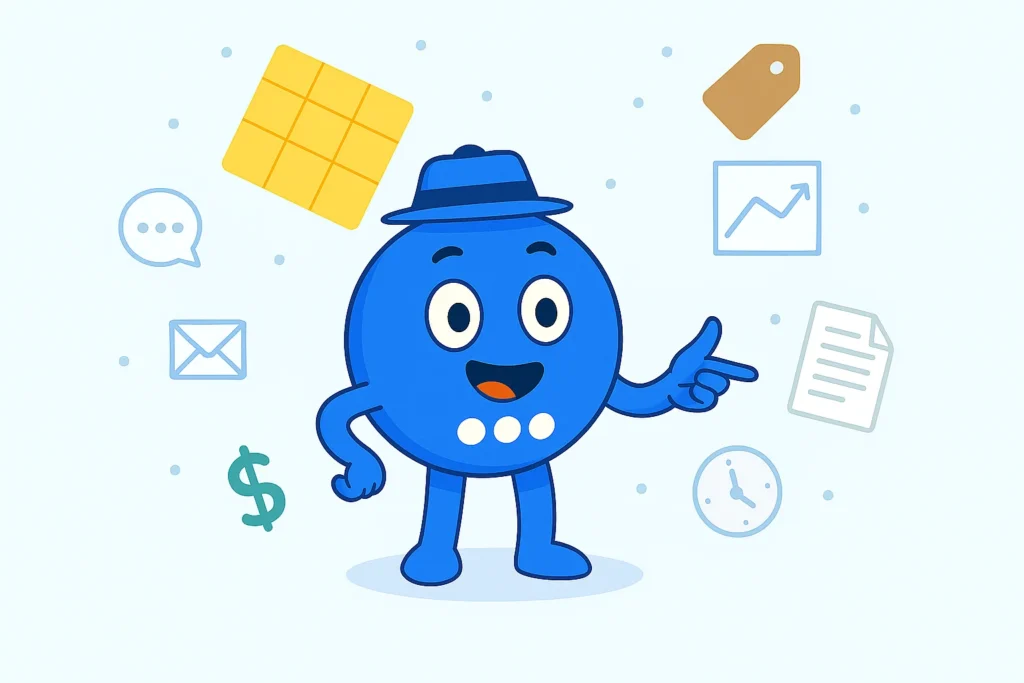
As Valentine’s Day approaches, consumers are not only motivated by emotional desires but also by the fear of missing out (FOMO). With limited time to secure the perfect gift, many shoppers face a surge of last-minute urgency. This creates an ideal opportunity for businesses to tap into two powerful psychological triggers: the fear of missing out and the panic-driven rush for the perfect gift.
FOMO: Creating Urgency with Time-Sensitive Offers
Fear of Missing Out (FOMO) is a powerful psychological trigger that can drive rapid consumer behavior, especially during time-sensitive holidays like Valentine’s Day. This strategy works particularly well because the event occurs only once a year, intensifying the urgency.
People tend to feel a natural desire to avoid missing out on something desirable, and this impulse becomes even stronger when they know they have a limited time to act. FOMO motivates consumers to take action before the opportunity slips away, making them more likely to make an immediate purchase.
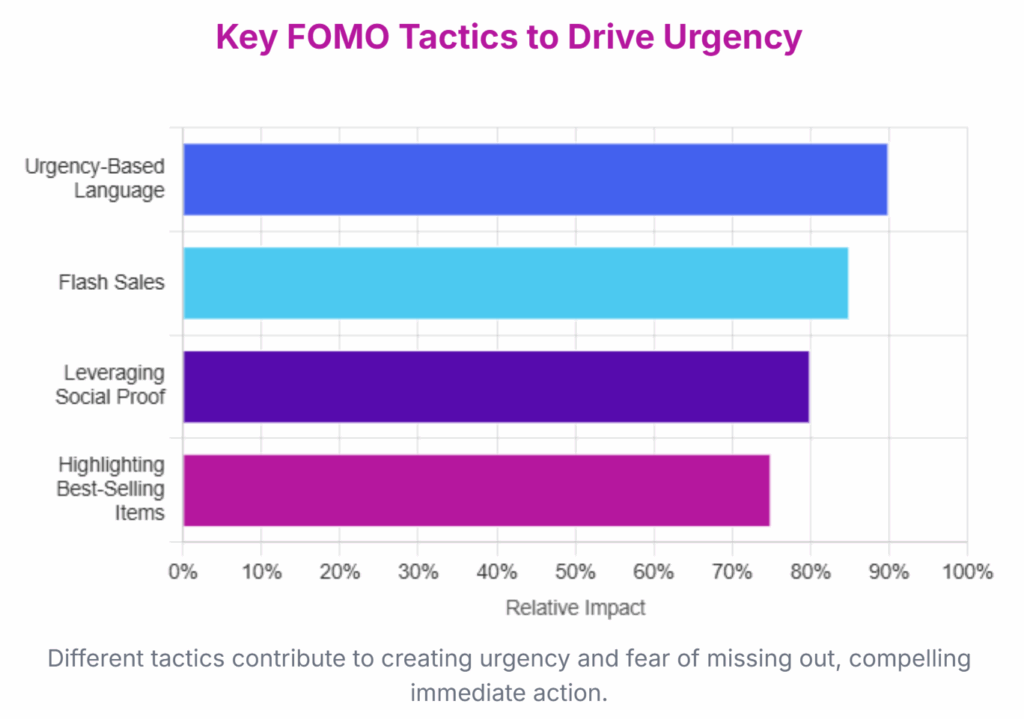
Key FOMO Tactics to Drive Urgency
- Urgency-Based Language
Using urgency in your messaging is a great way to trigger FOMO. Phrases like “Limited time only,” “Sale ends tonight,” or “Only X left” create immediate pressure on customers. These messages tell customers that time is running out, making them feel they need to act quickly before the offer disappears. - Flash Sales
Flash sales are short, limited-time promotions that push customers to make quick decisions. Since these sales are only available for a short time, shoppers feel an urgency to buy now, fearing they’ll miss out if they wait too long. This often leads to impulsive buying as customers rush to take advantage of the deal. - Leveraging Social Proof
Social proof is a powerful FOMO tool. When customers see messages like “One customer just bought this 2 minutes ago” or “10 people are currently viewing this item,” it builds confidence and a sense of momentum. Customers feel reassured that others are buying the product, which makes them want to buy too, before it runs out. - Highlighting Best-Selling or Top-Rated Items
People are naturally drawn to popular or highly-rated products because they seem desirable. When businesses highlight these items, they not only grab attention but also create a feeling of urgency to get something that’s in demand. By showcasing best-sellers, businesses tap into FOMO, encouraging customers to act quickly before the item sells out.
The Last-Minute Rush: Enhancing FOMO with Convenient Solutions
As Valentine’s Day approaches, a significant number of consumers tend to procrastinate, resulting in a dramatic surge of last-minute purchases. This last-minute behavior creates a critical psychological window where urgency and the fear of “missing out” on the perfect gift become exceptionally powerful motivators. For businesses, this is a prime opportunity to capitalize on the rush and turn panic into profit.
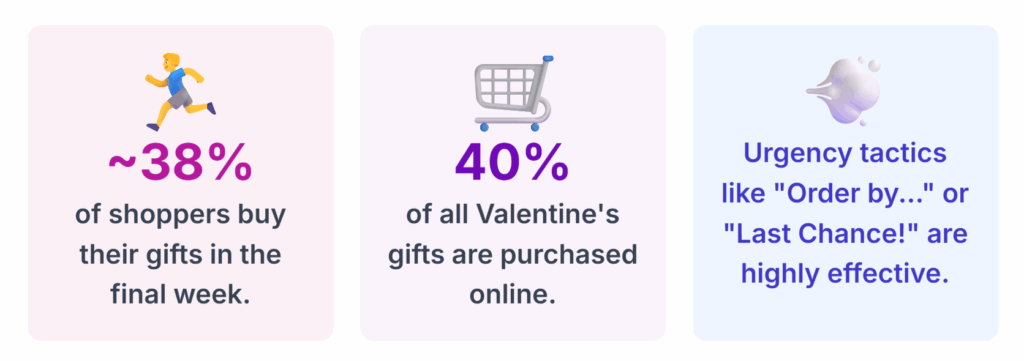
Strategies to Capture the Last-Minute Shopper
To effectively capture this market, businesses need to employ strategies that tap into consumers’ sense of urgency and their desire for quick solutions. Here are some key tactics:
- Time-Sensitive Discounts
Offering discounts like “20% off for the next 24 hours only” can create immediate pressure to act. The limited-time offer increases urgency, pushing consumers to make a decision quickly to take advantage of the deal. - Expedited Delivery Options
Promoting same-day or next-day delivery options directly addresses the core anxiety of last-minute shoppers. Clearly defining cutoff times for these expedited options ensures that customers know the deadline and can act before it’s too late. - Encouraging Pre-Orders
While it might seem counterintuitive, offering pre-order incentives or early-bird specials can help manage demand before the last-minute rush. This tactic eases the pressure on customers and spreads out sales in the lead-up to Valentine’s Day. - Gift Cards as Instant Solutions
Gift cards are a consistently popular option for procrastinators, as they offer an instant and flexible solution. By positioning gift cards as a quick fix, businesses can easily appeal to consumers who are short on time but still want to give a meaningful gift.
How FAB Enhances FOMO and Urgency
The Floating Awesome Button (FAB) is an invaluable tool for turning both FOMO and last-minute panic into conversions. Its features allow businesses to seamlessly incorporate urgency and social proof while maintaining a positive user experience:
To illustrate the practical application of FAB for FOMO and urgency, the following table maps common strategies to specific plugin features:
| FOMO Tactic | Relevant FAB Feature(s) | Psychological Impact/Benefit |
| Urgency-Based Language (e.g., “Limited Time!”) | Popups, Discount/Promo Popups, Floating Action Buttons | Creates immediate pressure to act now. |
| Real-Time Social Proof (e.g., “X people just bought this!”) | Popups, Toast Notifications | Builds confidence, triggers herd mentality, encourages quick action. |
| Limited-Time Offers / Flash Sales | Discount/Promo Popups, Custom Popups | Drives impulse purchases by emphasizing fleeting opportunity. |
| Countdown Timers | Countdown Timer in Tooltip Button to display the time remaining | Visually reinforces urgency, triggers loss aversion. |
| Highlighting Scarcity (Stock Levels) | Custom Popups, Floating Action Buttons linking to low-stock items | Creates fear of missing out on a desired item due to limited availability. |
| Exclusive Access / VIP Promos | Location Rules by User Roles / User Session, Custom Popups, Floating Action Buttons | Enhances perceived value and desirability by limiting access to a select group. |
| Exit-Intent Offers | Auto Trigger (Exit Intent) for Modal/Popup | Recovers abandoning users with a last-chance incentive, preventing cart abandonment. |
The “Procrastination Premium”
Last-minute shoppers often exhibit a “procrastination premium”—they are willing to pay more for speed and convenience. This makes them less price-sensitive but more value-driven, especially when time is of the essence. FAB’s ability to deliver highly visible, time-sensitive offers taps directly into this behavior. By offering express shipping, flash sales, and instant gift cards, businesses can turn this urgency into profit by catering to consumers’ convenience needs.
By combining FOMO with last-minute urgency, businesses can effectively capture the attention of procrastinators and turn their panic into high-value conversions. With the help of FAB’s tools—countdown timers, auto-triggers, sticky buttons, and toast notifications—businesses can offer timely solutions, enhance emotional appeal, and meet consumers’ need for speed. This dual strategy of urgency and social proof not only drives immediate action but also delivers a seamless, satisfying shopping experience.
The “Show-Off” Strategy: Creating the Ultimate FOMO (Fear of Missing Out)
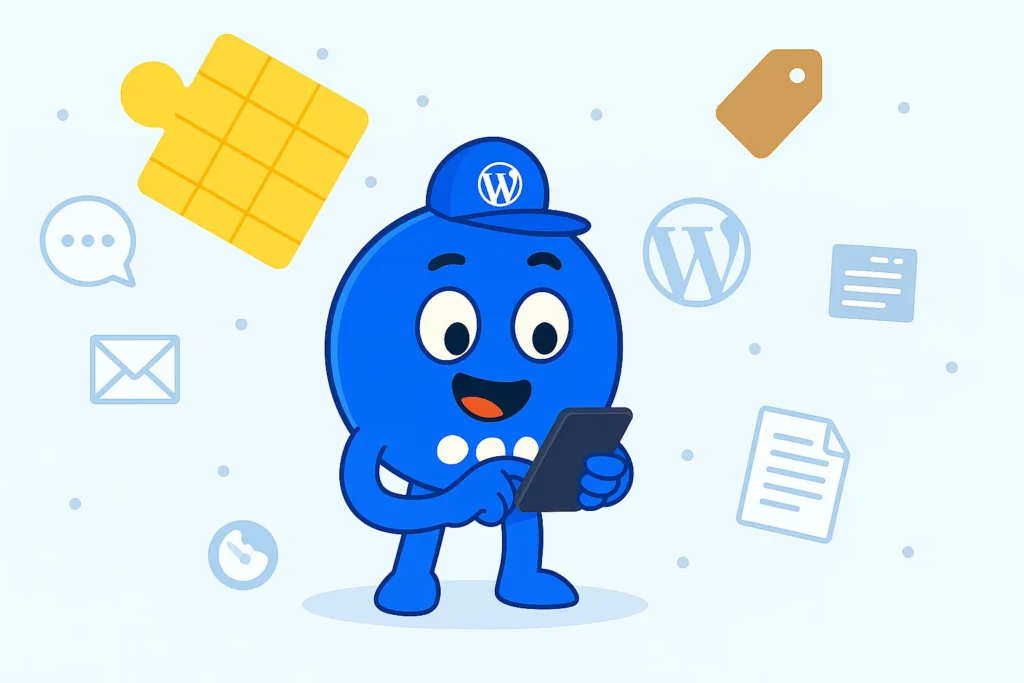
Fear of Missing Out (FOMO) is a powerful psychological trigger that can drive rapid consumer behavior, especially during time-sensitive holidays like Valentine’s Day. This strategy works particularly well because the event occurs only once a year, intensifying the urgency.
People tend to feel a natural desire to avoid missing out on something desirable, and this impulse becomes even stronger when they know they have a limited time to act. FOMO motivates consumers to take action before the opportunity slips away, making them more likely to make an immediate purchase.
Key FOMO Tactics to Drive Urgency
- Urgency-Based Language
One of the most effective ways to trigger FOMO is by using urgency-based language in your messaging. Phrases such as “Limited time only,” “Sale ends tonight,” or “Only X left” create an immediate sense of pressure on the consumer.
These phrases convey that time is running out, which pushes customers to make a decision quickly. The fear of missing out on a special offer can overwhelm their hesitation, motivating them to complete their purchase before the deal expires. - Flash Sales
Flash sales are another tactic that businesses can use to create urgency. These short-duration promotions are designed to create a narrow time window for customers to make a decision.
Since flash sales are limited in time, customers feel an increased sense of urgency to act fast, fearing that they will miss out on the deal if they don’t buy right away. The quick and limited nature of these sales often results in impulsive buying as consumers rush to make their purchase before the opportunity disappears. - Leveraging Social Proof
Another powerful strategy for creating FOMO is to leverage social proof. When potential customers see messages like “One customer just bought this 2 minutes ago” or “10 people are currently viewing this item,” it builds confidence and a sense of momentum.
Social proof reassures customers that others are making the same decision, and it triggers the bandwagon effect—the psychological tendency to follow the actions of others. This creates a sense of urgency to purchase before the product runs out or before others take advantage of the offer. - Highlighting Best-Selling or Top-Rated Items
Consumers are naturally drawn to best-selling or top-rated items, as these products often carry a sense of desirability and social validation. When businesses showcase popular items, they not only attract attention but also create an atmosphere where the consumer feels they need to act quickly to get something that others clearly want. By emphasizing these products, businesses tap into the fear of missing out on something that’s in high demand, increasing the likelihood of a purchase.
Valentine’s Day Amplifies FOMO
Valentine’s Day has a unique advantage when it comes to FOMO because it’s a fixed event that happens on a specific date each year. Unlike typical flash sales that could happen repeatedly, Valentine’s Day has a set and unchangeable date, creating a hard deadline for consumers. Knowing that they can’t celebrate the day again until the following year, customers are more likely to act fast to seize the moment. The fear of missing out on the opportunity to express love with a meaningful gift is a powerful motivator.
To capitalize on this, marketers should emphasize the limited-time opportunity to purchase a Valentine’s Day-specific gift rather than just focusing on discounts.
The “True Love” Premium: How Much is Affection Worth?
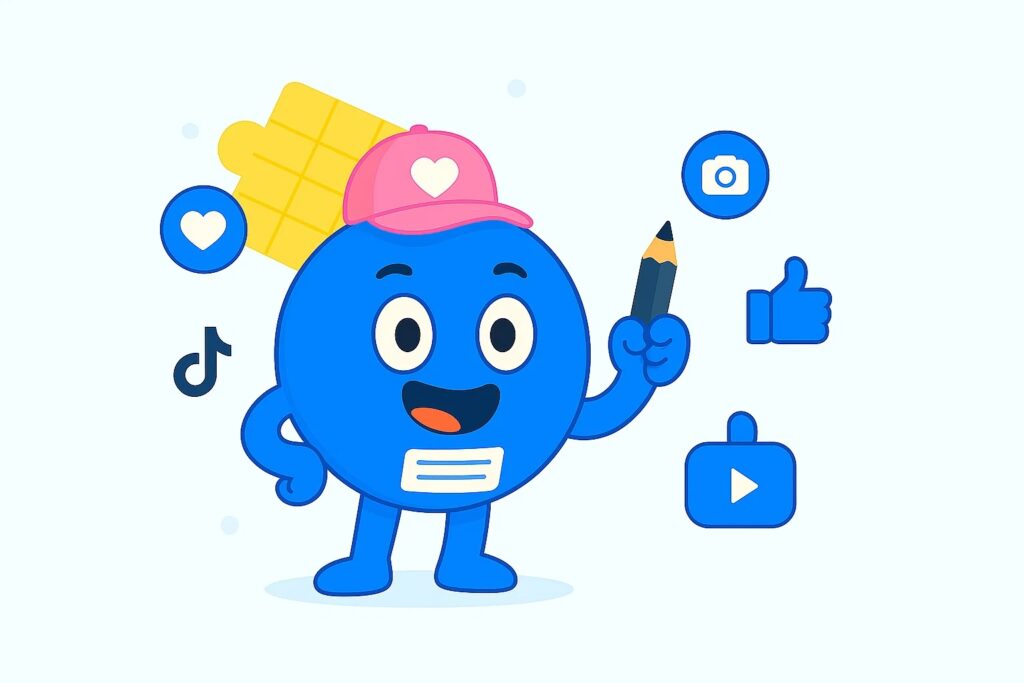
Valentine’s Day is a unique occasion where consumers are more willing to spend extra to show their love and appreciation. This willingness often transcends the monetary cost of gifts, as the emotional value becomes the focal point. People are driven by the desire to offer something special that symbolizes deeper affection—often resulting in a premium purchase.
The Emotional Power of Premium Upsells
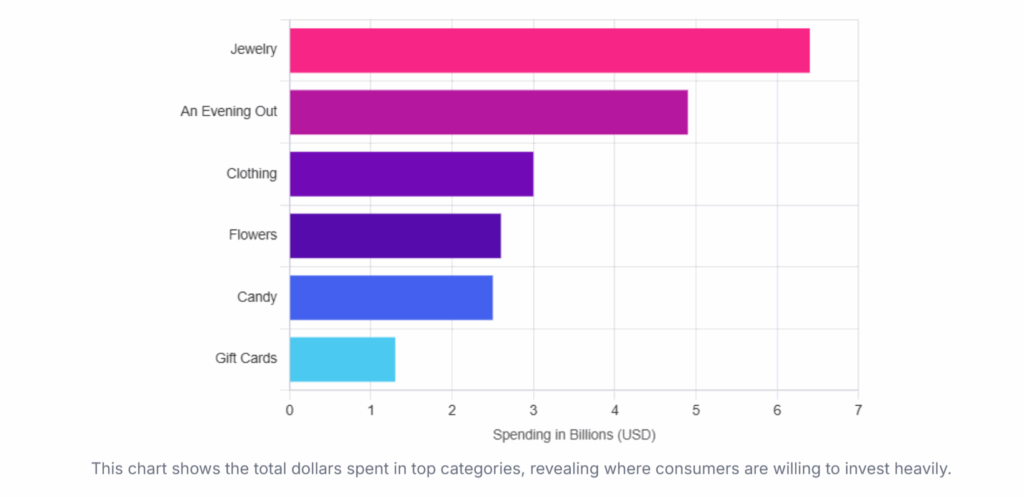
The heart of Valentine’s Day spending is driven by emotional factors—the dopamine released during gift-giving amplifies the joy of spending more. Premium upsells like:
- Luxurious gift wrapping
- Personalized messages
- Expedited delivery services
- Jewelry
- Evening out experiences
- High-end clothing
- Fresh flowers
- Gift cards
Can elevate a simple gift into a meaningful gesture of affection. These premium items offer not just physical value, but also an emotional experience, deepening the connection between giver and recipient. By positioning these options as ways to “show just how much you truly care,” they become irresistible, especially during this emotionally charged holiday.
FAB’s Role in Presenting Premium Offers
The Floating Awesome Button (FAB) enhances this strategy by offering features that present premium options seamlessly:
- Customizable Popups: Display special offerings, like a “Deluxe Valentine’s Package,” when customers view a product.
- Sticky Buttons: Keep premium options easily accessible throughout the shopping experience.
- Visually Appealing Designs: Use FAB’s icons, animations, and buttons to create an elevated, sophisticated look for premium offers.
Tapping into the Emotional Appeal
Valentine’s upselling works best when it taps into emotional desires rather than just functional needs. A premium gift wrap, for example, isn’t just a service—it’s a symbol of care and thoughtfulness. FAB helps deliver these options in a way that feels natural and effortless, aligning with the customer’s goal of expressing genuine affection.
On Valentine’s Day, affection is more than just an emotional exchange—it’s also a driver for premium purchases. By using emotional marketing techniques and the tools provided by FAB, businesses can enhance their customers’ shopping experience, helping them express their love in the most memorable and meaningful way.
The “More Love” Bundles: Tempting Them to Buy More
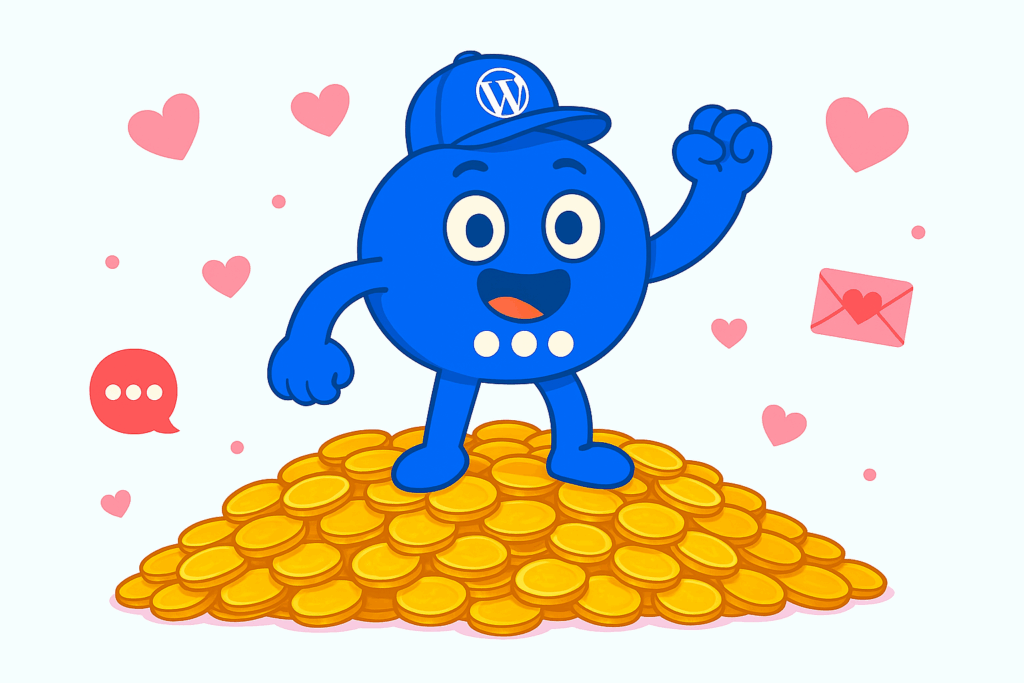
Product bundling is a powerful strategy that not only boosts Average Order Value (AOV) but also increases overall sales. It appeals to consumers by offering greater value, convenience, and the satisfying feeling of “getting a deal.”
According to Forrester, upselling and cross-selling, often made possible through strategic bundling, can contribute 10-30% of total eCommerce revenues. With Valentine’s Day approaching, leveraging the right bundling strategies can create an irresistible offer for consumers.
Effective Bundling Strategies for Valentine’s Day
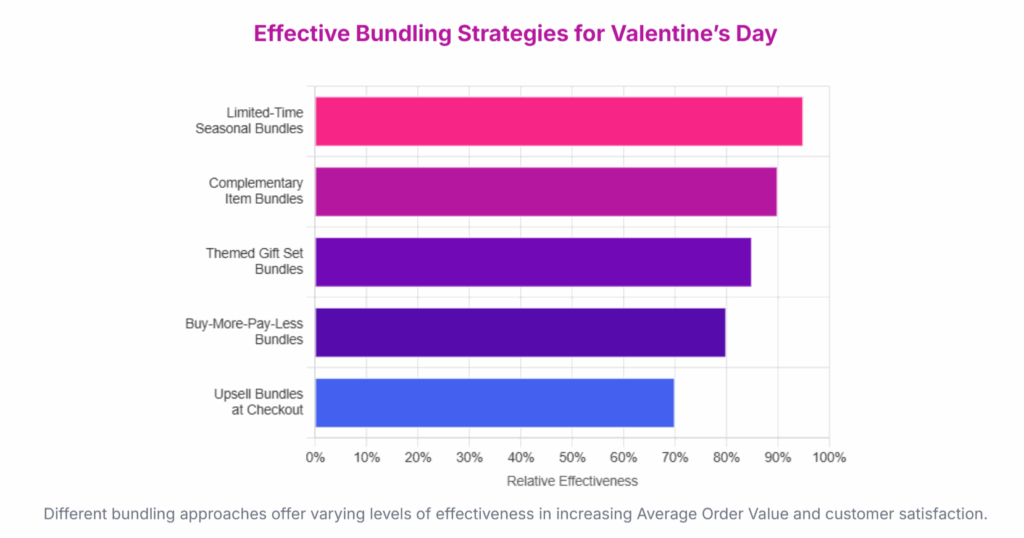
- Complementary Item Bundles
One of the simplest yet most effective bundling strategies is combining complementary products. For instance, pairing chocolates and flowers or offering a curated beauty set provides a thoughtful, complete gift. These bundles offer customers a pre-selected, high-value option, saving them time and decision-making stress. - Themed Gift Set Bundles
Create Valentine’s Day-themed bundles like “Love Boxes” or “Sweetheart Dessert Combos.” These sets offer pre-packaged, visually appealing solutions that simplify the buying process, making them especially attractive for those pressed for time. - “Buy-More-Pay-Less” Offers
Encouraging customers to purchase multiple items at a discounted rate can also drive up sales. A “Buy 2, get 1 free” or “Save 20% on 3 or more” type of offer encourages higher cart values, motivating customers to purchase more to take advantage of the deal. - Limited-Time Seasonal Bundles
Offering exclusive holiday-themed bundles that are available for a limited time adds urgency to the purchase. This makes the customer feel that if they don’t act quickly, they might miss out on a unique opportunity. - Relevant Freebies
Including free gifts or promotional items with bundles increases their perceived value. Additionally, it can help businesses manage overstock by bundling slower-moving products with more popular items. - Highlighting Cost Savings
Clearly emphasizing the savings customers get from purchasing a bundle versus individual items reinforces the value of the offer. When customers see they’re getting more for less, it motivates them to act faster.
Leveraging FAB for Effective Bundling
The Floating Awesome Button (FAB) is an excellent tool to promote these bundles across your website in a highly visible and user-friendly way. Here’s how you can use FAB to maximize the impact of your Valentine’s Day bundles:
| Bundling Strategy | Relevant FAB Feature(s) | How FAB Supports This |
| Complementary Item Bundles (e.g., flowers + chocolates) | Custom Popups, Featured Product Button, Floating Action Buttons | FAB popups showcase bundles with visuals. Sticky buttons link directly to bundle pages. |
| Themed Gift Set Bundles (e.g., “Love Boxes”) | Custom Popups, Promo/Discount Popups, Floating Action Buttons | FAB popups display themed sets. Buttons lead to exclusive bundle landing pages. |
| Buy-More-Pay-Less Bundles | Custom Popups (for displaying discount info), Promo/Discount Popups | FAB popups highlight cost savings for multiple items/quantities. |
| Limited-Time Seasonal Bundles | Custom Template Popups (for countdown timers), Toast Notifications, Auto Trigger (Time Delay, Exit Intent) | FAB popups feature countdowns. Toasts provide subtle, timely reminders. |
| Upsell Bundles at Checkout | Auto Trigger (Exit Intent, Time Delay) for Popups | FAB popups appear near checkout, presenting relevant offers to prevent abandonment. |
| Contextual Bundle Promotion | Filter by Page/Post, Custom Post Type | FAB’s filtering displays bundles only on relevant product pages/categories. |
| Simplify Decision-Making (Bundles as Solutions) | Custom Template Popups (with clear visuals/descriptions), Floating Action Buttons | FAB makes pre-packaged bundles visible and accessible, reducing decision fatigue. |
Valentine’s Day bundling offers both value and convenience to customers, driving higher sales and improving the shopping experience. By leveraging FAB for strategic promotion, businesses can effectively increase Average Order Value (AOV) and simplify decision-making for customers, leading to higher conversions and more satisfied shoppers.
Love for All: Expanding Beyond Couples
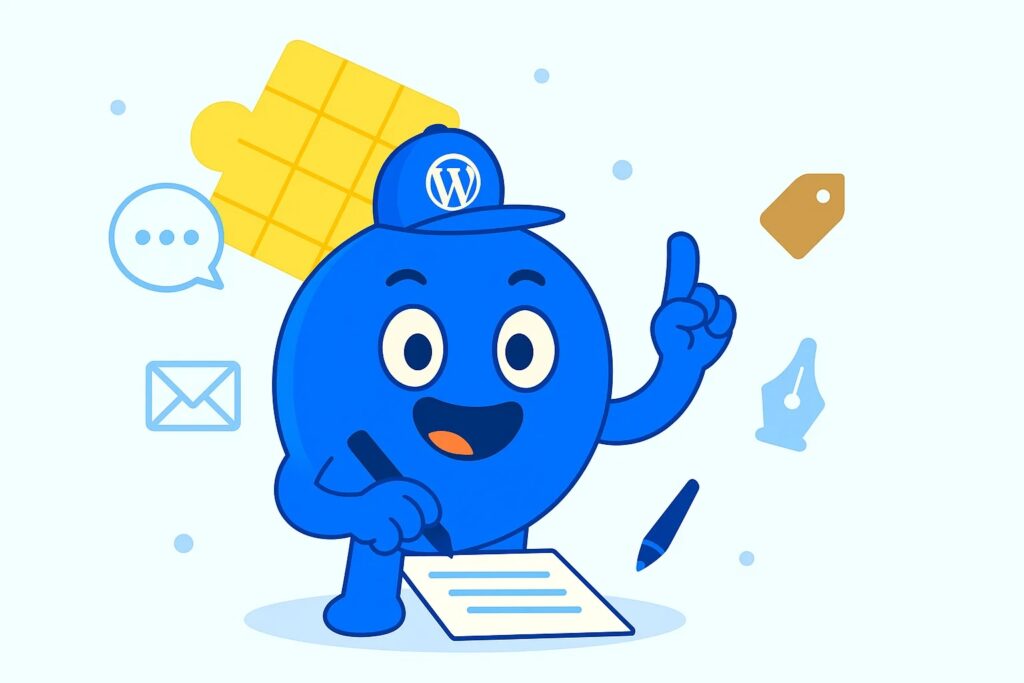
Valentine’s Day has traditionally focused on romantic couples, but this perception is shifting. Today, there’s a growing trend toward celebrating self-love, friendships (especially on “Galentine’s Day” on February 13th), family bonds, and even affection for pets. This broadening scope opens up significant opportunities for businesses to tap into a much larger audience and increase sales beyond the conventional romantic market.
Inclusive Strategies for a Wider Audience
To effectively appeal to this expanded audience, businesses can implement several strategies:
- Encourage Self-Gifting: Position products as a treat for oneself, appealing to the growing desire for self-care and personal indulgence.
- Celebrate Friendships: For Galentine’s Day, offer sales like buy-one-get-one (BOGO) deals or curated “care packages” for friends.
- Segmented Gift Guides: Develop curated gift guides for various relationships—friends, parents, colleagues, and pets—making it easier for customers to find the perfect gift for anyone.
- Promote Experiences: Offer experiences, such as cooking classes or spa packages, that friends or family can enjoy together, rather than limiting them to couples.
- Gift Cards: These versatile gifts are great for all relationships, especially for customers unsure of a specific choice.
- Reposition Existing Products: Highlight the broader appeal of your products, like creating “perfect pair” bundles for non-romantic recipients, or using holiday-appropriate colors.
Using FAB to Target a Broader Audience
The Floating Awesome Button (FAB) can significantly enhance the reach of these inclusive strategies by enabling segmented messaging and promotions. FAB offers powerful features to target specific audiences:
| Targeting Strategy | Relevant FAB Feature(s) | How FAB Supports This |
| Self-Gifting Promotions | Custom Popups, Floating Action Buttons, Filter by User Roles/Session | FAB popups can present “Treat Yourself” offers. Buttons can link to self-care product categories, filtered for new or returning users. |
| “Galentine’s Day” Campaigns | Custom Popups, Discount/Promo Popups, Filter by Page/Post | FAB popups can showcase “Bestie Bundles” or BOGO offers. Buttons can appear on blog posts about friendship gifts. |
| Family & Pet-Focused Gifts | Custom Popups, Image Popups, Filter by Page/Post | FAB popups can display “Family Love” or “Pet Lover” gift sets with visuals. Buttons can link to relevant product categories. |
| Curated Gift Guides (Segmented) | Floating Action Buttons linking to specific gift guide pages, Custom Popups (to promote guides) | FAB buttons provide quick access to gift guides filtered by relationship (friends, parents, pets), simplifying discovery. |
| Experience-Based Offers (non-romantic) | Custom Popups, Floating Action Buttons | FAB popups can promote experiences like cooking classes or spa packages suitable for friends/family, with direct booking links. |
| Personalized Messaging | Filter by User Roles/Session, Custom Template Popups, Toast Notifications | FAB delivers tailored messages (e.g., “Because you’re a VIP, here’s an exclusive offer”) to specific user segments. |
| Broad Announcements | Toast Notifications, Floating Action Buttons | FAB toasts can announce “Celebrate ALL your loves this Valentine’s!” or remind users about “Galentine’s Day.” |
Effortless Spending: Making the Purchase Too Easy to Resist
A complex or confusing checkout process is one of the top reasons for cart abandonment, with nearly 17% of shoppers abandoning their purchases due to complications.
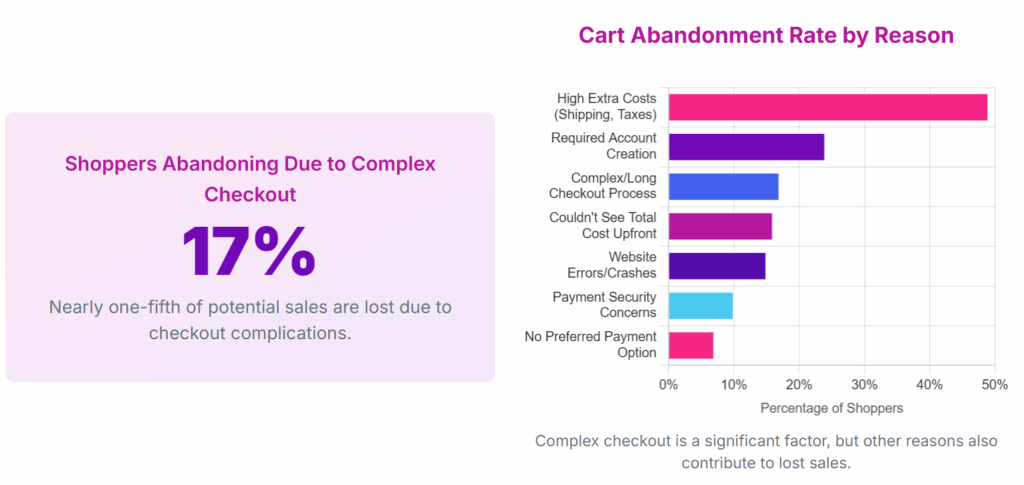
The goal is simple: make the purchase journey as seamless and intuitive as possible, eliminating distractions and minimizing cognitive load for the customer. A smooth and straightforward experience boosts conversion rates and reduces abandonment.
Key Steps to Simplify the Checkout Process
- Streamlined Checkout Flow
A simplified process with fewer steps and an optional single-page checkout ensures customers don’t feel overwhelmed. A progress indicator can also keep them informed of where they are in the process. - Mobile Optimization
Since 55.4% of online purchases are made on mobile, ensuring that your checkout process is responsive, fast, and touch-friendly is crucial. Mobile-optimized checkout should feature larger tap targets for easy navigation. - Guest Checkout
Offering a guest checkout option can significantly speed up the process. A large number of consumers (43%) prefer this method for its convenience. - Multiple Payment Options
Provide a variety of payment choices, such as digital wallets (PayPal, ApplePay, Google Pay) and Buy Now, Pay Later (BNPL) options. These can increase conversion rates by up to 30%. - Transparent Shipping Costs
Display shipping fees early in the process to avoid any surprise charges that may cause cart abandonment. - Security and Trust
Use security badges (SSL certificates) and PCI-compliant payment gateways to reassure customers their transactions are safe. - Auto-Fill and One-Click Payment
Auto-fill features for address and payment information, along with real-time validation, help reduce errors and speed up the checkout.
Optimizing Calls to Action (CTAs) with FAB
The following table summarizes key CTA best practices and their reported impact on conversion, highlighting how FAB can support their implementation:
| CTA Best Practice | Reported Conversion Impact | Relevant FAB Feature(s) |
| Clear & Specific Language | +161% conversion rate | Custom Popups, Floating Action Buttons, Toast Notifications |
| Above-the-Fold Placement | Outperforms below-fold by 304% | Floating Action Buttons, Popups |
| Centered Placement | +682% more clicks | Floating Action Buttons (Center position) |
| End-of-Product-Page Placement | +70% conversion increase | Floating Action Buttons (Bottom position), Popups |
| Personalized CTAs | +202% better performance, +42% more viewers | Filter by User Roles/Session, Custom Popups |
| Adding Urgency | +332% conversion rate | Enable countdown timers, Toast Notifications, Auto Trigger (Time Delay, Exit Intent) |
| Color Change (e.g., Red) | +21% conversion rate | Customizable Button Color |
| Video CTAs | +380% more clicks (when embedded in video) | Custom Template Popups (for embedding video content with CTA) |
Simplifying the checkout process and optimizing CTAs can dramatically improve conversion rates. With tools like the Floating Awesome Button (FAB), businesses can create a smooth, intuitive purchasing journey, boosting sales and customer satisfaction. By making the experience effortless and personalized, you can reduce cart abandonment and increase revenue.
FAB’s Valentine’s Day Promotional Toast: A Heartfelt, Limited-Time Offer

FAB’s toast notifications offer a subtle yet impactful way to deliver time-sensitive messages without disrupting the user experience. For Valentine’s Day, craft messages with urgency and emotional appeal, such as “Limited-Time Valentine’s Treat!” or “Our gift to your love story!” Clear offers like “15% Off” or “Free Gift” paired with a strong CTA like “Claim Your Gift!” encourage immediate action.
With FAB’s customization options, you can tailor the toast’s duration, position, and styling to match your brand’s Valentine’s aesthetic, incorporating red, pink, and heart icons. FAB’s PRO version also allows auto-trigger options, ensuring timely delivery.
Toast notifications are effective because they provide a gentle reminder without disrupting the user’s flow, unlike more intrusive popups. This subtle approach enhances emotional connection, making offers feel personal and special rather than generic discounts.
In summary, FAB’s toasts combine urgency, emotional appeal, and seamless integration to drive engagement and conversions, making them an ideal tool for Valentine’s Day promotions.
Read more about: Skyrocket Valentine’s Sales: Powerful Valentine Day’s Toast Marketing with FAB
Conclusion
Mastering Valentine’s Day upselling goes beyond simply increasing sales; it’s about tapping into consumer emotions and leveraging digital tools. Valentine’s spending is driven by emotional fulfillment, social validation, and the brain’s dopamine reward system, making it more about the emotional value of a gift than its price.
The Floating Awesome Button (FAB) is a key tool for executing these strategies effectively. Its versatile features, including customizable popups, sticky action buttons, and toast notifications, allow businesses to:
- Activate FOMO: Create urgency with countdowns and social proof, using FAB’s auto-triggers to push time-sensitive offers.
- Increase Perceived Value: Present premium upsells like personalized gifts through FAB’s customizable popups and seamless integration.
- Capitalize on Last-Minute Purchases: Use quick-action buttons and toast notifications to offer urgent solutions, turning procrastination into profit.
- Boost Average Order Value: Display product bundles at key moments to simplify choices and encourage higher spend.
- Expand Beyond Couples: Target a wider audience—self-gifters, friends, and families—using FAB’s advanced filtering for personalized messaging.
- Ensure Easy Spending: Streamline the checkout with clear Calls to Action and effortless upselling, particularly on mobile.
In conclusion, a successful Valentine’s Day strategy isn’t just about discounts—it’s about understanding the emotional triggers behind consumer behavior. By using FAB strategically, businesses can guide customers through an emotionally engaging and effortless buying process, mastering the art of upselling and boosting sales.


